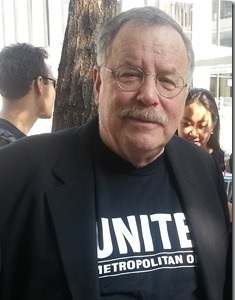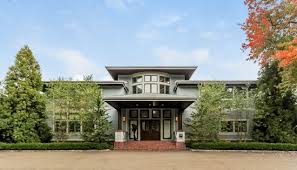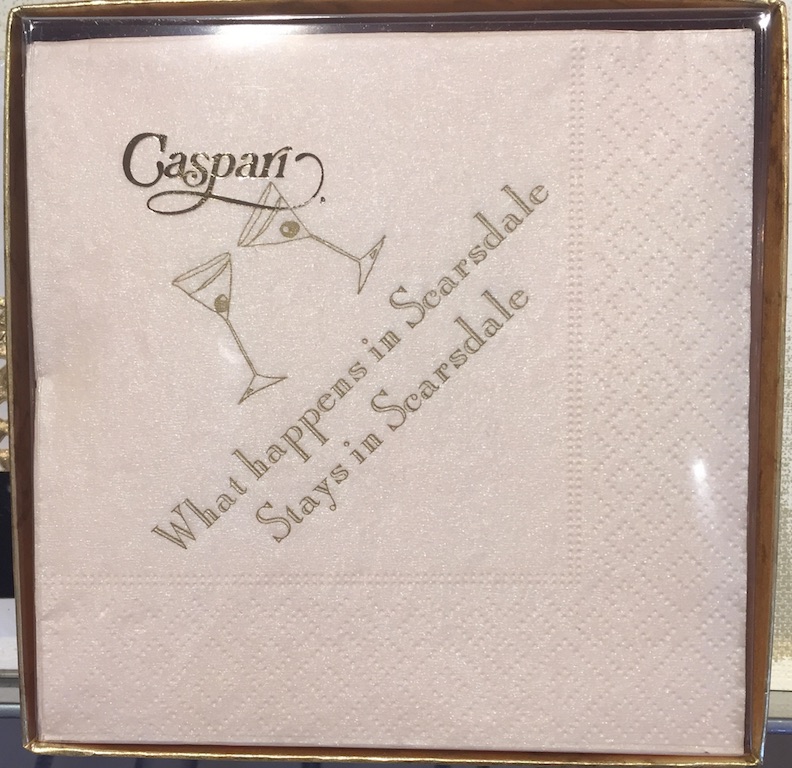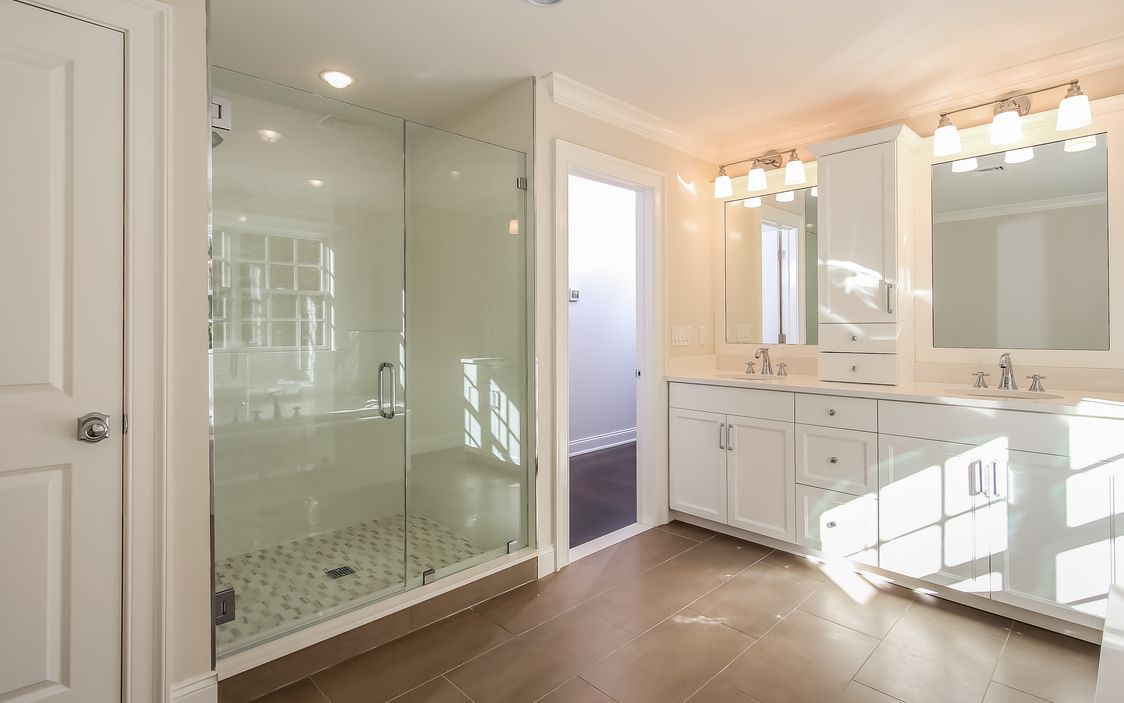Labor Negotiator Alan Gordon Passes Away at 70
- Details
- Written by: Joanne Wallenstein
- Hits: 5231
 Greenacres resident Alan S. Gordon passed away on January 1, 2016 in New Hampshire. He suffered from multiple system atrophy, a rare neurological disorder and died from a stroke.
Greenacres resident Alan S. Gordon passed away on January 1, 2016 in New Hampshire. He suffered from multiple system atrophy, a rare neurological disorder and died from a stroke.
Gordon was the executive director of the American Guild of Musical Artists and represented performers from all over the U.S. including the vocalists in NYC's Metropolitan Opera Company and the San Francisco Opera and Ballet. In a 2014 labor dispute with employees at the Metropolitan Opera, Gordon called for open negotiations to allow the press to report on the sessions. When the Met refused he invited reporters to pre-bargaining sessions. The New York Times said that Gordon "had a way of getting under his adversaries' skin and seemed to relish a good battle."
Peter Gelb, the General Manager of the Met said that a performance of the opera would be dedicated to Gordon this month.
Gordon was born on April 22, 1945 and grew up in the Norwood section of the Bronx where he attended public school. He graduated from City College and the Syracuse University College of Law and worked in labor law for the Textile Workers Union of America and the Directors Build of America.
Gordon is survived by his wife Susan of BrewsterRoad, his daughters Elizabeth and Jessica, a grandson and his sister Karen Gordon Marrinan.
A memorial service was held in his honor at the Riverside Memorial Chapel in Mt. Vernon where a tenor from the Met Chorus, Nathan Carlisle sang, "You'll Never Walk Along." Read more about Gordon here.
There Ought to be a Law
- Details
- Written by: Joanne Wallenstein
- Hits: 4181
 Assemblywoman Amy Paulin is kicking off a contest for middle school students, grades 6-8, in the 88th Assembly District, titled "There Ought to Be a Law." This contest asks students to identify a problem impacting New Yorkers which needs a legislative solution by creating a new law. One (1) first-place winner will be selected and have the prize of knowing that his or her idea has a chance at becoming a law that impacts over 19 million New Yorkers. One (1) second-place winner and one (1) third-place winner will also be chosen to receive a citation from the New York State Assembly.
Assemblywoman Amy Paulin is kicking off a contest for middle school students, grades 6-8, in the 88th Assembly District, titled "There Ought to Be a Law." This contest asks students to identify a problem impacting New Yorkers which needs a legislative solution by creating a new law. One (1) first-place winner will be selected and have the prize of knowing that his or her idea has a chance at becoming a law that impacts over 19 million New Yorkers. One (1) second-place winner and one (1) third-place winner will also be chosen to receive a citation from the New York State Assembly.
The first-place contest winner will have the opportunity to join Assemblywoman Paulin at the State Capitol where the winner, along with a description of his/her proposed law, will receive recognition by members of the Assembly on the Assembly floor.
Here's how to enter:
Students interested in entering the contest will write an essay (750 words maximum) detailing their proposed idea for a law.
To Students: what you choose to write about is up to you, so feel free to get creative! To help you get started, here are some things to consider about your proposed bill idea:
- What's the problem that needs a legislative solution?
- What's your solution? Be as detailed as possible.
- What's the background on this problem? (Are there any statistics, reports, historical information, or even your own personal stories that you could use to back up the need for a legislative proposal?)
- Are there any financial impacts? If so, how much money do you think it would cost?
- Who do you think would support this bill?
- Who do you think would oppose this bill?
The contest is open to all middle school students who live in the 88th Assembly District. This covers the following cities and towns: Scarsdale, Eastchester, Tuckahoe, Bronxville, Pelham, and parts of New Rochelle and White Plains.
How to submit your entry:
Those interested in participating in the contest can submit their entries in two ways:
Download and fill out this PDF form, email it and the essay on your proposed law to paulina@assembly.state.ny.us – Attention: Lisa Hofflich, Community Liaison for Assemblywoman Paulin — along with the following information:
Subject line: There Ought to Be a Law Contest Entry
Attach BOTH the Registration Form and the essay (in either an MS Word or Adobe PDF File)
OR
2) Fill out this online form. http://amypaulin.com/there-ought-to-be-a-law-contest-entry-form/
Contest Timeline
February 29: All contest submissions are due by midnight on February 29, 2016.
April 1: The first-, second-, and third-place winners will be notified by telephone and email.
Mid-April to Early June: The first-place contest winner will be able to travel to Albany to join Assemblywoman Paulin in the State Capitol before the end of the legislative session. The exact date and time will depend on the Assemblywoman's meeting schedule.
If you have any questions, please contact Assemblywoman Paulin's District Office at (914) 723-1115.
Monte Nido Withdraws Application to Open Treatment Center on Morris Lane
- Details
- Written by: Joanne Wallenstein
- Hits: 16874
 Scarsdale10583 received this information on December 23 from Nancy Turett who represents Monte Nido. The company had filed a highly controversial application to open a treament home for adolescent girls with eating disorders in a large home at 2 Morris Lane in Murray Hill. After much discussion, Scarsdale Village Trustees filed an objection to the application and a hearing with the Commissioner of Health was planned for after the New Year.
Scarsdale10583 received this information on December 23 from Nancy Turett who represents Monte Nido. The company had filed a highly controversial application to open a treament home for adolescent girls with eating disorders in a large home at 2 Morris Lane in Murray Hill. After much discussion, Scarsdale Village Trustees filed an objection to the application and a hearing with the Commissioner of Health was planned for after the New Year.
However,in the interim, Monte Nido decided to withdraw their application after neighbors stated their intentions to litigate over easements and driveway access. Since the property sits on a flag lot, the driveway crosses neighboring properties and easements were granted for residential use. Save for these issues, the Padavan Law would have protected the applicant's from objections from neighbors.
Here is the information we received:
(from Nancy Turett)
Sadly, Monte Nido is ceasing its pursuit of the property at 2 Morris Lane. Thanks to Scarsdale10583 for e-enabling an open conversation.
We want to ensure Scarsdale leaders and citizens have a clear and accurate understanding of how this came to pass. Attached is an explanatory message from Vicki Kroviak, CEO of Monte Nido:
December 23, 2015
Monte Nido message regarding Scarsdale situation
In order to stay true to its mission to provide superb residential treatment for adolescent girls in regions where the unmet need is especially great, Monte Nido is going to cease planning to move into 2 Morris Lane. Despite our proposal to establish that home being solidly within the spirit and letter of the New York State Padovan law, and the wonderful support of many citizens and leaders across the Scarsdale community, a few neighbors have threatened driveway-access and easement-related litigation that while baseless, could tie up progress at this address for years. While Monte Nido is quite confident that the Village of Scarsdale's rejection of the 2 Morris Lane site was without legal support or justification under the New York State Padavan law, we have chosen to pursue other alternative sites and communities. There is no single property objective more important than getting the families in the area access to Monte Nido residential care as soon as possible.
We appreciate the outpouring of advocacy and support that has come from people across Scarsdale and the region, and at the same time have learned about the lack of understanding about eating disorders and their treatment that even highly educated and accomplished individuals may have. Our residential program in Irvington for adults is operating smoothly and without disruption to the local community. Monte Nido remains fully committed to expanding its services in Westchester County and the surrounding area to address a recognized health care need.
We will turn our attention in this area to other properties with neighbors and leaders that welcome residential resources for people with eating disorders. We'll also partner with local health, civic and educational leaders fill the knowledge gaps that interfere not only with establishment of nearby residences but early detection and best-practice-care of eating disorders in our children and loved ones.
Vicki Kroviak
CEO
Monte Nido & Affiliates
Gifts from the Dale
- Details
- Written by: Joanne Wallenstein
- Hits: 4961
 You don't have to go far to find great gifts for friends and family in and out of the 'dale this season. We've scouted the area for gifts that will resonate with Scarsdale pals as well as suggestions from selected Scarsdale stores.
You don't have to go far to find great gifts for friends and family in and out of the 'dale this season. We've scouted the area for gifts that will resonate with Scarsdale pals as well as suggestions from selected Scarsdale stores.
Toast the holidays with cocktail napkins that say, "What Happens in Scarsdale, Stays in Scarsdale" and polish champagne flutes with dishcloths adorned with a special Scarsdale inscription that reads, "In Scarsdale we don't believe everything we hear and we don't tell everything we know." Both at La Dentelliere on East Parkway.
Candy n' Cards in Scarsdale Village has a nice array of toiletries from Michelle and chocolates all wrapped for Christmas. Stop in to pick up the perfect hostess gift.
toiletries from Michelle and chocolates all wrapped for Christmas. Stop in to pick up the perfect hostess gift.
 The Eye Gallery on Spencer place invites you to come in and try on new Celine and Dior sunglasses, which make great holiday gifts! Gift certificates available too.
The Eye Gallery on Spencer place invites you to come in and try on new Celine and Dior sunglasses, which make great holiday gifts! Gift certificates available too.
Local writer and Scarsdale10583.com contributor Deborah Skolnik has published a collection of hilarious satirical poems that gently poke fun at our town's most lovable quirks. Based on her smash-hit Facebook page, which has attracted more than 700 followers, 100 Days of Gentle Scarsdale Satire is a surefire hit with not only native Scarsdalians, but anyone who appreciates a good laugh. Available on Amazon for $24.95 plus shipping, but  Scarsdale residents can buy the book for just $19.95 with free delivery--send your name and phone number to Deborah Skolnik at gentlescarsdalesatire@gmail.com.
Scarsdale residents can buy the book for just $19.95 with free delivery--send your name and phone number to Deborah Skolnik at gentlescarsdalesatire@gmail.com.
You'll find loads of candy and chocolates in all shapes and size, as well as plush pants, pillows, and these Scarsdale socks at Imagine Candy on Harwood Court.  Stop by for free candy tastings on Fridays and Saturdays.
Stop by for free candy tastings on Fridays and Saturdays.
Zachys recommends:
For the wine lover: Piper Heidsieck  Brut NV Limited Edition Light Box. Piper Heidsieck is the underrated superstar of Champagne and this features the best holiday packaging ever. On sale for $39.99.
Brut NV Limited Edition Light Box. Piper Heidsieck is the underrated superstar of Champagne and this features the best holiday packaging ever. On sale for $39.99.
For the spirits lover: Widow Jane Straight Bourbon Whisky, from nearby Brooklyn! You heard us right, Kentucky Bourbon from Brooklyn. $68.99.
What better way to say merry, merry than with a contribution to your favorite local organization. There are so many worthwhile groups in town that rely on your support. Keep in mind the Scarsdale Volunteer Ambulance Corps, the Scarsdale High School PTA Scholarship Fund,  the Scarsdale Adult School, the Campaign for the Scarsdale Library, the Friends of the Scarsdale Parks and Scarsdale Family Counseling to name a few.
the Scarsdale Adult School, the Campaign for the Scarsdale Library, the Friends of the Scarsdale Parks and Scarsdale Family Counseling to name a few.
Shop at Presents For Purpose and they will contribute 15% of sales to the Center @ 862, (formerly the Teen Center.) Find housewares, stationary, and artisan chocolates, along with a wide array of personalized items.
At the Golden Horseshoe:
All Good Things offers Gingerbread House Construction Kits with candy, marshmallows, gumdrops and icing, Build it there or bring it home. Priced at under $25. Also find the largest jelly belly collection in New York and candy to please everyone on your list.
 Beginnings Boutique: This one-size fits all poncho comes in cream, espresso, grey, and black: $107 each.
Beginnings Boutique: This one-size fits all poncho comes in cream, espresso, grey, and black: $107 each.
For the animal lover in your life, consider these necklaces from Knot Just Pearls priced at $180, each original piece is made by hand, using natural stones.
Eye Q Optometrists is selling OYO boxes, terrific to store multiple pairs of eyeglasses and sunglasses. They come in many colors and wood finishes and retail from $250 to  $300.
$300.
Infinity is stocked with great gifts for kids, tweens and teens. Check out their pajamas, pillows, robes, journals, hats, gloves, jewelry, clothes, Malibu sugar bath soaps, cool socks and headbands.
MYX Fitness at the Golden Horseshoe invites you to give the gift of sweat! Treat yourself or a friend to a 3-pack of MYX FITNESS classes for $89, and also consider gifting their tanks, tees and sweatshirts.
Behind the Stonewall on Manor Lane
- Details
- Written by: Joanne Wallenstein
- Hits: 4691
 What's behind the stonewall at Heathcote Manor, the new development on Manor Lane off Weaver Street? Apartments ... cluster homes .....townhouses? The project had been approved many years ago but was dormant for decades. I was curious to see what had finally been built and made an appointment to take a tour.
What's behind the stonewall at Heathcote Manor, the new development on Manor Lane off Weaver Street? Apartments ... cluster homes .....townhouses? The project had been approved many years ago but was dormant for decades. I was curious to see what had finally been built and made an appointment to take a tour.
After I turned at a stoplight on Weaver Street and drove up Manor Lane, I found that these were actually single-family homes, and large ones at that. The unit I visited was a generous 5,260 square feet with it own .12-acre yard. I walked upstairs to the entry and initially thought I was in the lobby to the complex, but then realized that this was the entry hall to one of the nine single family homes.
The house was bright, well lit and spanking new.  The spacious foyer led to a new kitchen with high-end appliances, marble counters and an inviting island. The kitchen is connected to a large family room that looks out onto a green yard. Also on the first floor was a formal dining room, a living room and another large first floor room that could be a den or a library. Upstairs there were three family bedrooms, one with an en-suite bath, and a master bedroom suite that would be the envy of anyone living in one of Scarsdale's charming, (aka "old") homes. The master included a fireplace, two roomy walk-in closets and a master bath with an oversized shower, soaking tub and top of the line finishes.
The spacious foyer led to a new kitchen with high-end appliances, marble counters and an inviting island. The kitchen is connected to a large family room that looks out onto a green yard. Also on the first floor was a formal dining room, a living room and another large first floor room that could be a den or a library. Upstairs there were three family bedrooms, one with an en-suite bath, and a master bedroom suite that would be the envy of anyone living in one of Scarsdale's charming, (aka "old") homes. The master included a fireplace, two roomy walk-in closets and a master bath with an oversized shower, soaking tub and top of the line finishes.
And if that wasn't enough, the basement was finished as well and had room for a large playroom, media room or gym. The lower level leads to a 2-car garage and if needed, the builder will even install an elevator.
I quickly realized that my bias about new construction was unfounded.
 The homes are located in Heathcote and students can attend Heathcote Elementary School as well as the Scarsdale Middle School and High School. Priced at $1,698,000, the realtor anticipates that taxes will be around $40,000 per year. There will be a fee for common charges to pay for mowing and landscaping. In my view, the only downside is the lack of a sidewalk along Weaver Street and the location opposite the shopping center, but that has its advantages too.
The homes are located in Heathcote and students can attend Heathcote Elementary School as well as the Scarsdale Middle School and High School. Priced at $1,698,000, the realtor anticipates that taxes will be around $40,000 per year. There will be a fee for common charges to pay for mowing and landscaping. In my view, the only downside is the lack of a sidewalk along Weaver Street and the location opposite the shopping center, but that has its advantages too.
The house showed well and four of the nine units are already sold. The complex is built by Pais Built Homes of Pound Ridge and appears to be quality construction. Check them out here:











